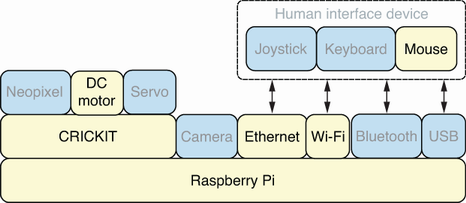This chapter will teach you how to build a web application to control your robot. The application will work equally well on desktop computers and mobile phones. The full range of robot movements will be available through the application, along with commands that can be used to measure the network performance of the application, end to end. As we build the application, you will learn useful techniques for measuring the application performance, as well as detecting and fixing certain types of web request failures.
Web applications provide a powerful platform to build a mechanism for controlling the robot by a human operator. Web apps are accessible both from the desktop application and mobile devices. They also work consistently across the main desktop operating systems (i.e., Windows, Mac, and Linux).
